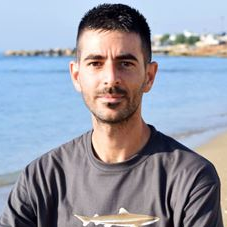Impacts of Climate Change on Small-Scale Fisheries
A special issue of Fishes (ISSN 2410-3888). This special issue belongs to the section "Environment and Climate Change".
Deadline for manuscript submissions: closed (30 September 2022) | Viewed by 7782
Special Issue Editors
Interests: zoology; marine biology; taxonomy; fishery research; non-indigenous fish; citizen science
Special Issues, Collections and Topics in MDPI journals
Interests: marine biology; conservation biology; fish ecology and taxonomy; fishery research; biological invasions
Special Issues, Collections and Topics in MDPI journals
Special Issue Information
Dear Colleagues,
The effects of climate change can directly or indirectly have a negative effect on small-scale fisheries, whose communities are often the most vulnerable to climate change. Phenomena such as storms, excessive heating of the sea water, extreme rainfall, changes in the sea level, etc., are becoming more frequent overall. As a consequence of these phenomena, which can be worsened by other factors such as habitat destruction, overfishing, biological invasions and pollution, the abundance and distribution of fish and other valuable biological resources is changing. The aim of this Special Issue, “Impacts of Climate Change on Small-scale Fisheries”, is to collect high-quality manuscripts focusing on small-scale fisheries and on the impacts that climate change and other factors could have on them.
Dr. Bianca Maria Lombardo
Dr. Francesco Tiralongo
Prof. Dr. Giacomo Bernardi
Guest Editors
Manuscript Submission Information
Manuscripts should be submitted online at www.mdpi.com by registering and logging in to this website. Once you are registered, click here to go to the submission form. Manuscripts can be submitted until the deadline. All submissions that pass pre-check are peer-reviewed. Accepted papers will be published continuously in the journal (as soon as accepted) and will be listed together on the special issue website. Research articles, review articles as well as short communications are invited. For planned papers, a title and short abstract (about 100 words) can be sent to the Editorial Office for announcement on this website.
Submitted manuscripts should not have been published previously, nor be under consideration for publication elsewhere (except conference proceedings papers). All manuscripts are thoroughly refereed through a single-blind peer-review process. A guide for authors and other relevant information for submission of manuscripts is available on the Instructions for Authors page. Fishes is an international peer-reviewed open access monthly journal published by MDPI.
Please visit the Instructions for Authors page before submitting a manuscript. The Article Processing Charge (APC) for publication in this open access journal is 2600 CHF (Swiss Francs). Submitted papers should be well formatted and use good English. Authors may use MDPI's English editing service prior to publication or during author revisions.
Keywords
- climate change
- small-scale fisheries
- biological invasions
- overfishing
- marine water warming
- artisanal fishery







